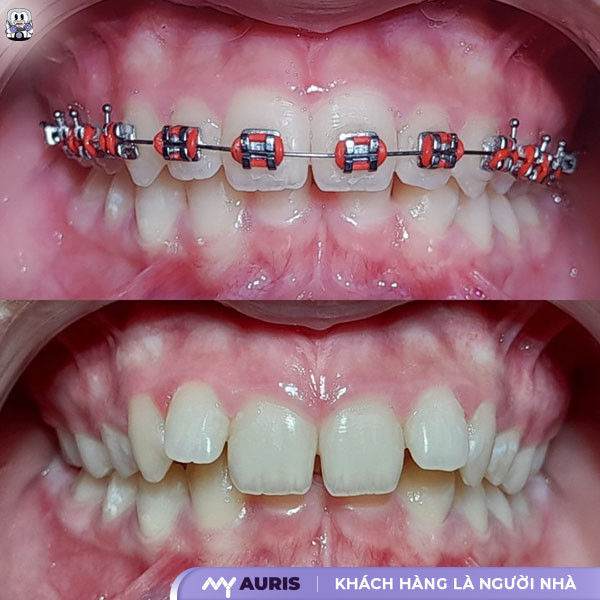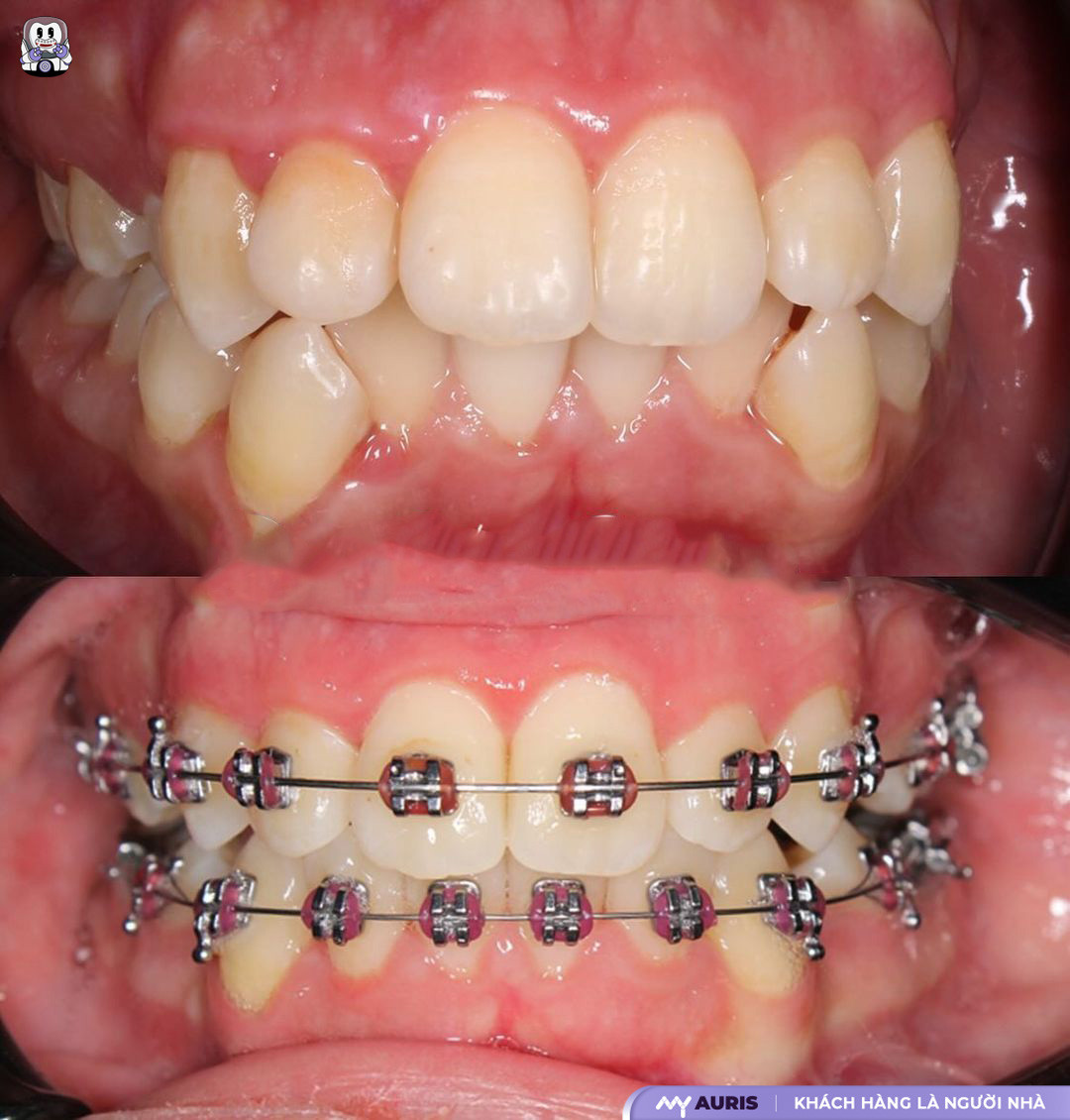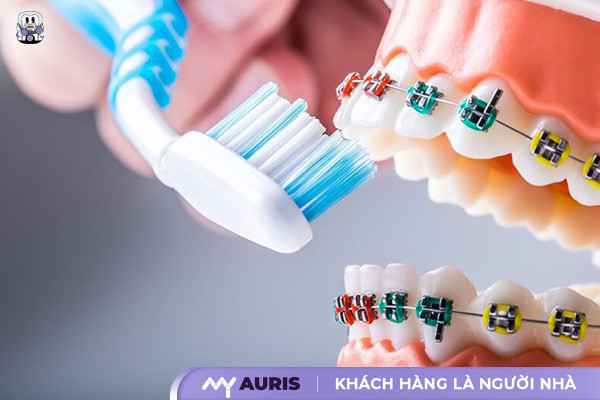Braces is an intensive orthodontic technique, requiring high precision and long treatment time. The braces process applies force to the teeth to move them, helping to adjust the bite properly and correct teeth misalignment problems such as upper jaw protrusion, lower jaw protrusion, buck teeth, underbite, spaced teeth, and crowded teeth. In each stage, the change in teeth will take place gradually, helping the teeth to rearrange in a harmonious way.
Although the braces technique is somewhat complicated and time-consuming, this is an effective solution to correct misalignments, improve aesthetics, make the smile more beautiful and bring confidence to the person with braces.
Stages in the orthodontic braces treatment
The stages of orthodontic braces are divided into specific stages, helping to effectively control orthodontics, correct malocclusion and malocclusion. optimally shape the teeth.
Examination and treatment planning phase
This is the first step in the braces process. The dentist will take x-rays, evaluate the condition of the teeth and evaluate the condition of the jawbone to develop a suitable treatment regimen. At the same time, the doctor will advise the patient on choosing braces that suit the aesthetic needs, orthodontic effectiveness as well as the patient’s financial ability.
The period after 3 months
In the first 3 months, depending on the condition of the teeth, the patient may have to have the tooth extracted or spaced as prescribed by the doctor. This is a critical time when crooked teeth begin to move significantly. If your teeth are crooked or crowded, the change will be easily noticeable. However, the teeth have not yet achieved the desired regularity, but if you see early changes, it proves that the orthodontic process is highly effective.

The period after 6 months
Teeth continue to move but the speed will be slower than the 3-month period. In the case of crowded teeth, the teeth can be quickly aligned, but bite misalignments can easily occur, especially the front teeth tend to protrude. This is when the doctor needs to control and adjust promptly to ensure a harmonious bite.
After 9 months
After 9 months, the teeth are more stable, the jawbone is widening, and the bite is gradually harmonious. Patients can clearly see positive changes during the braces process. This is an important milestone when the orthodontic effect is gradually taking shape.

The period after 15 months month
The teeth enter the completion stage. Small deviations will continue to be corrected to achieve the highest dental aesthetics. The shaping of the teeth is almost complete, creating a solid foundation for long-term orthodontic results.
End of braces treatment
Time The end of treatment depends on the tooth characteristics of each patient. Once the teeth are completely stable, the doctor will remove the braces and consider wearing a retainer to maintain orthodontic results. At the same time, patients will be instructed on how to care for their teeth, eat soft foods and maintain proper oral hygiene to protect long-term orthodontic results.

How long does the braces procedure take?
The duration of braces usually ranges from 12 months to 36 months, depending on each person’s dental condition. Because the braces process takes place in each braces stage, requiring perseverance and patience to achieve the desired braces results.
During this process, teeth change little by little, making it difficult for you to recognize the change immediately. However, the changes in teeth through each stage are clear evidence of the effectiveness of this method. It is important that you cooperate well with the orthodontist and follow the correct treatment regimen to ensure braces are completed on time.

What is the most painful stage of braces?
Braces are an effective orthodontic method to help overcome these conditions. However, many patients worry about pain during the braces process. So which stage causes the most tooth pain?
Braces includes many important stages, each stage will have a different level of impact force:
- : Proceed to place interdental elastic between teeth number 6 and tooth number 7 to create space for attaching braces.
- Attach braces: After creating space, the doctor will attach braces to the position of tooth number 6 or tooth number 7.
- : The doctor fixes the braces on each tooth, then wires the connection between the braces and the braces.
- Withdraws the archwire to create orthodontic tightening force: Stage of adjusting the force to move the teeth to align the teeth to the desired position.
- Remove braces and wear retainer: Keep teeth stable in new position.
According to Dr. Vu Thi Quyen – My Auris Dental, the level of pain will vary depending on each stage. However, the stage causing The most painful toothache is when placing interdental elastics.
When placing interdental elastics on teeth number 6 and 7, the force will push the molars apart to create space. Because the teeth are not used to this pressure, the patient will feel obvious pain, especially in the first 3-4 days of the first week. first.
After the teeth gradually adapt, the next stages such as attaching the braces, placing the archwire, and withdrawing the archwire to create orthodontic tightening force will no longer be too painful. However, a slight feeling of tension may appear each time the force is adjusted to move the teeth.

Experience in overcoming pain when wearing braces?
During the braces process, pain and discomfort are inevitable due to the orthodontic tightening force in each stage. To help your teeth adapt better, the dentist recommends that you adopt a reasonable diet with soft foods and liquid foods such as porridge, soup, pho, and vermicelli. At the same time, it is necessary to maintain proper oral hygiene to limit tooth decay and gingivitis.
Reduce pain when subjected to orthodontic tightening force
In the early days of braces, braces and braces put pressure on your teeth, making you uncomfortable. To effectively relieve pain, you should eat soft, liquid dishes such as porridge, soup, pho, and vermicelli to reduce the force of biting and chewing. Cool fruit smoothies also help relieve pain quickly. If necessary, you can use pain relievers such as Paracetamol, this medicine is effective in reducing pain during orthodontics.
Treatment of pain caused by braces rubbing on lips – cheeks
During the braces process, the appliance can cause friction, leading to soft tissue scratches. To limit this situation, use dental wax to cover the braces, stitch the braces and wires. This helps reduce friction, limit pain and mucosal damage.
Treat pain when braces and arch wires are misaligned
If the braces or archwire are misaligned due to impact, you need to go to the dentist immediately so the dentist can adjust the position of the braces, brackets, and tighten the archwire. To prevent unnecessary injuries, you should limit participation in high-impact sports to protect your orthodontic appliances. Besides reducing pain caused by orthodontic tightening force, you need to clean your teeth at least 2-3 times a day about 15 minutes after eating to limit tooth decay and gingivitis. Use dental floss, an interdental brush or a water flosser to clean between teeth. In addition, mouthwash containing Fluoride will help strengthen teeth during the braces process.
Important notes when braces help achieve high efficiency
Braces (orthodontics) is an orthodontic treatment method that helps improve aesthetics and chewing function. To ensure optimal braces effectiveness, you need to adhere to the following important notes:
Limit eating hard and chewy foods
During the initial stages of braces, the tooth roots are weaker than normal due to the force used to move them to the desired position. Therefore, you should limit eating hard and chewy foods such as hard candy, beef jerky, hard-shelled bread, etc. because they can damage teeth and affect the orthodontic treatment process. In addition, chewing gum and consuming foods high in sugar are not recommended because they increase the risk of dental disease, gum disease and gum disease. causing negative effects on oral health as well as the effectiveness of braces.

Proper oral care and hygiene method
Clean oral hygiene is an important factor in preventing plaque and disease-causing bacteria during the braces process. To ensure good oral health, you need to follow these instructions correctly:
- Brush your teeth at least twice a day with a special toothbrush.
- Use dental floss to remove plaque between teeth.
- Using mouthwash helps kill bacteria and clean the oral cavity.
Follow the orthodontist’s instructions
Doctor’s skills account for 80% of the effectiveness of braces, so you need to choose a reputable dentist to perform orthodontics. In addition, regular follow-up visits according to the doctor’s appointment are very important to check the speed of tooth movement, monitor oral health and adjust traction appropriately. Following the correct treatment regimen will help you achieve good orthodontic results.





